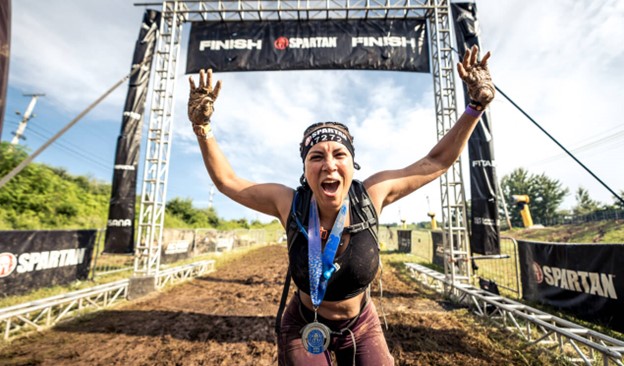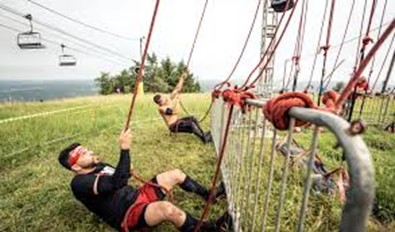John Telesca of NY is a frequent participant in obstacle course races and Tough Mudder events. In the following article, John Telesca explains how to build the endurance and strength necessary to conquer these demanding events.
Obstacle course races (OCRs) have surged in popularity, drawing enthusiasts from all walks of life to tackle challenging courses filled with physical and mental tests. Events like
Tough Mudder,
Spartan Race, and
Warrior Dash require more than just basic fitness; they demand a specific blend of endurance, strength, agility, and mental fortitude.
John Telesca of NY Emphasizes the Demands of Obstacle Course Races
Before diving into training, it's crucial to understand what OCRs entail. These races typically combine long-distance running with a series of obstacles, such as climbing walls, crawling through mud, and navigating rope courses. Each event can vary in distance and difficulty, but they all require a robust physical and mental foundation.
To tailor your training effectively, familiarize yourself with the specific obstacles you'll encounter in your chosen race. Many races publish their obstacle lists or course maps in advance, which can guide your preparation.
Build a Solid Endurance Base
Endurance is key to completing an OCR, as you'll need to sustain your energy over varying distances and terrain. John Telesca provides information below on how to build a strong endurance foundation:
Long Runs: Incorporate weekly long runs into your training regimen. Gradually increase your mileage to build stamina and familiarize yourself with running for extended periods. Aim for at least one long run per week, starting at a distance you can handle and progressively extending it.
Trail Running: Many OCRs take place on rugged terrain. Train on trails or uneven surfaces to mimic race conditions and build your leg strength and stability. Trail running also improves your ability to navigate inclines and declines, which are common in OCRs.
Cross-Training: John Telesca of NY says to engage in activities like cycling or swimming to enhance cardiovascular fitness without the impact of running. Cross-training helps prevent injury and provides a balanced approach to building endurance.

 Develop Functional Strength
Develop Functional Strength
OCRs demand a combination of strength and functional fitness to tackle obstacles effectively. Focus on the following areas to build the strength required for the race:
Bodyweight Exercises: Incorporate exercises like push-ups, pull-ups, burpees, and planks into your routine. These exercises build upper body, core, and overall strength essential for climbing, crawling, and maneuvering obstacles.
Strength Training: Incorporate weightlifting into your routine to develop overall strength. Focus on compound movements like squats, deadlifts, and bench presses. Strengthening your major muscle groups will improve your ability to lift, carry, and climb.
Grip Strength: Many obstacles, such as monkey bars and ropes, require strong grip strength. Include exercises like farmer’s walks, dead hangs, and grip trainers in your regimen to enhance your grip.
 Enhance Agility and Flexibility
Enhance Agility and Flexibility
Agility and flexibility are crucial for navigating obstacles efficiently and preventing injuries. Here’s how to incorporate these elements into your training:
Agility Drills: Incorporate agility drills such as ladder drills, cone drills, and plyometric exercises. These drills improve your quickness, coordination, and ability to change direction rapidly.
Flexibility Training: Incorporate stretching and mobility exercises to enhance flexibility and reduce the risk of injury. John Telesca of Port Chester says that yoga or dynamic stretching routines can improve your range of motion and help with recovery.
Obstacle Simulation: Practice specific obstacles if possible. Some gyms offer OCR-specific equipment, such as monkey bars and climbing walls. Training on these obstacles helps you adapt to the physical demands of the race.
Implement High-Intensity Interval Training (HIIT)
HIIT is a valuable training method for OCRs due to its ability to enhance both endurance and strength simultaneously. HIIT involves short bursts of intense exercise followed by rest or low-intensity periods. Here's how to incorporate HIIT into your training:
Interval Workouts: Combine running intervals with bodyweight exercises in your HIIT sessions. For example, sprint for 30 seconds, then perform burpees or push-ups for 30 seconds, followed by a short rest. Repeat for several rounds.
Circuit Training: Create circuits that combine cardio and strength exercises. For instance, alternate between running, jumping rope, and performing strength exercises like squats and lunges. This approach simulates the race environment and builds overall fitness.
 Focus on Mental Toughness
Focus on Mental Toughness
OCRs are as much a mental challenge as they are a physical one. Building mental toughness will help you push through fatigue and overcome obstacles. Here’s how to strengthen your mental resolve:
Visualization: Visualize yourself successfully completing the race and overcoming obstacles. This mental rehearsal can boost confidence and prepare you for race day.
Stress Exposure: Train in conditions that simulate race day stress, such as adverse weather or difficult terrain. Exposing yourself to these challenges during training will help you adapt and remain composed during the race.
Goal Setting: Set specific, achievable goals for your training and race performance. Tracking your progress and celebrating small victories will keep you motivated and focused.
Recovery and Nutrition
Proper recovery and nutrition are essential for optimal performance and injury prevention. Here’s how to support your training:
Rest and Recovery: Allow adequate rest between workouts to prevent overtraining and promote muscle recovery. Incorporate rest days, get quality sleep, and consider activities like foam rolling or massage to aid recovery.
Balanced Nutrition: Fuel your body with a balanced diet rich in carbohydrates, proteins, and healthy fats. Proper nutrition supports energy levels, muscle repair, and overall health. Stay hydrated and consider supplementing with electrolytes during intense training sessions.
Conclusion
John Telesca of Port Chester concludes that training for obstacle course races requires a comprehensive approach that encompasses endurance, strength, agility, and mental toughness. By building a solid endurance base, developing functional strength, enhancing agility and flexibility, and incorporating HIIT, you can prepare effectively for the challenges of OCRs. Additionally, focusing on mental toughness, recovery, and nutrition will ensure you’re physically and mentally ready to tackle any obstacle that comes your way. Embrace the journey, stay committed, and you’ll be well-equipped to conquer your next obstacle course race.

 Develop Functional Strength
Develop Functional Strength Enhance Agility and Flexibility
Enhance Agility and Flexibility Focus on Mental Toughness
Focus on Mental Toughness